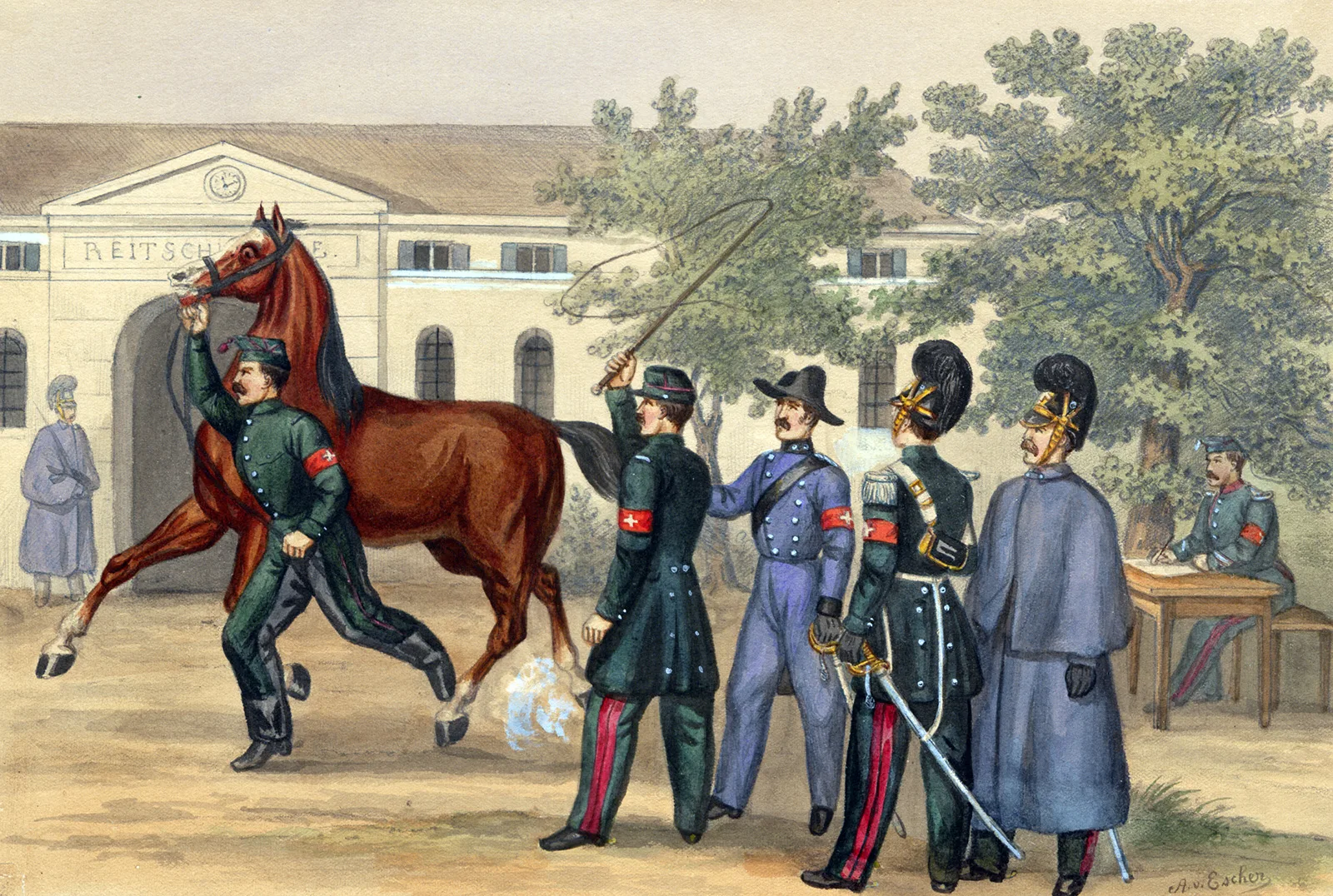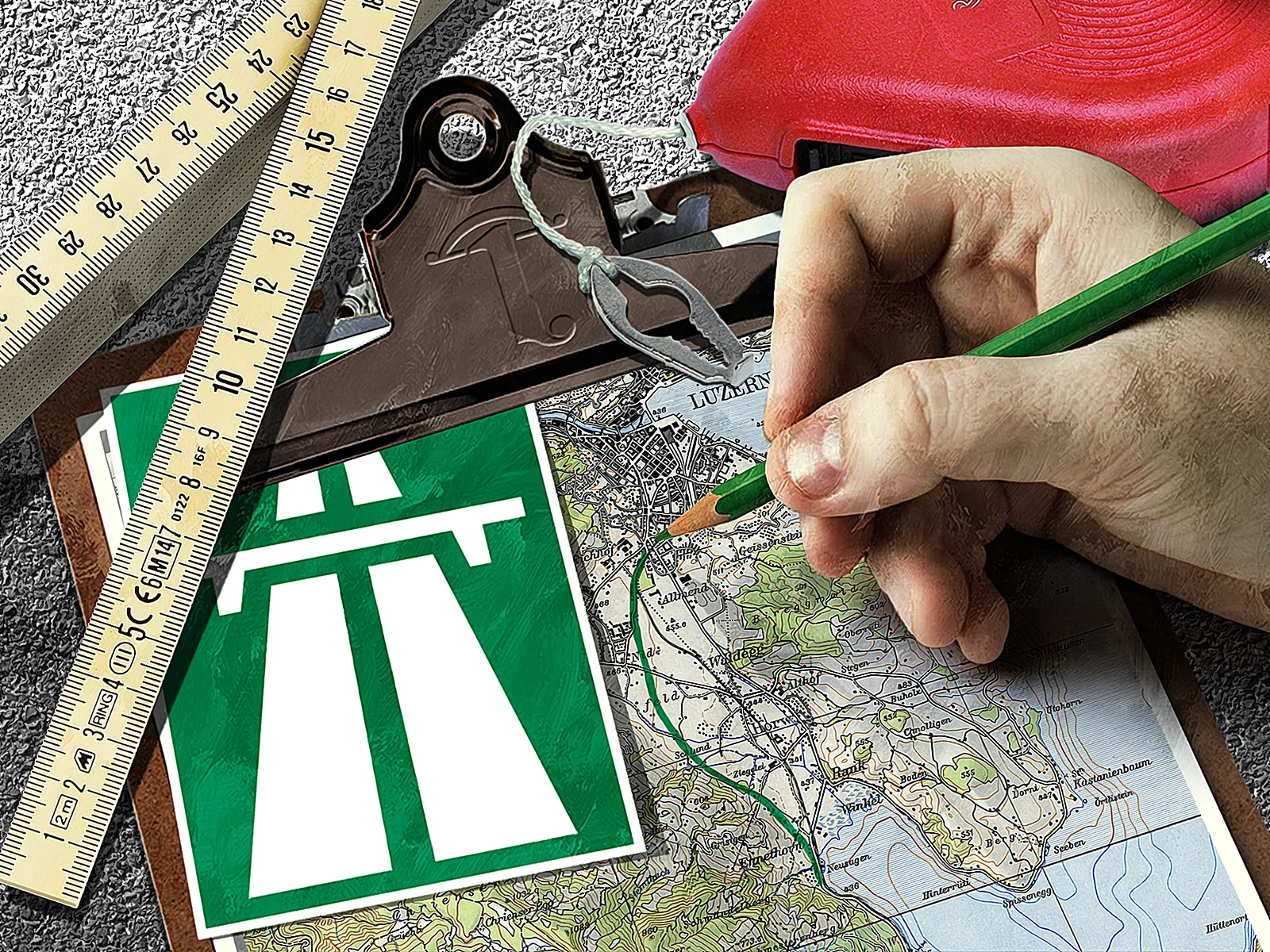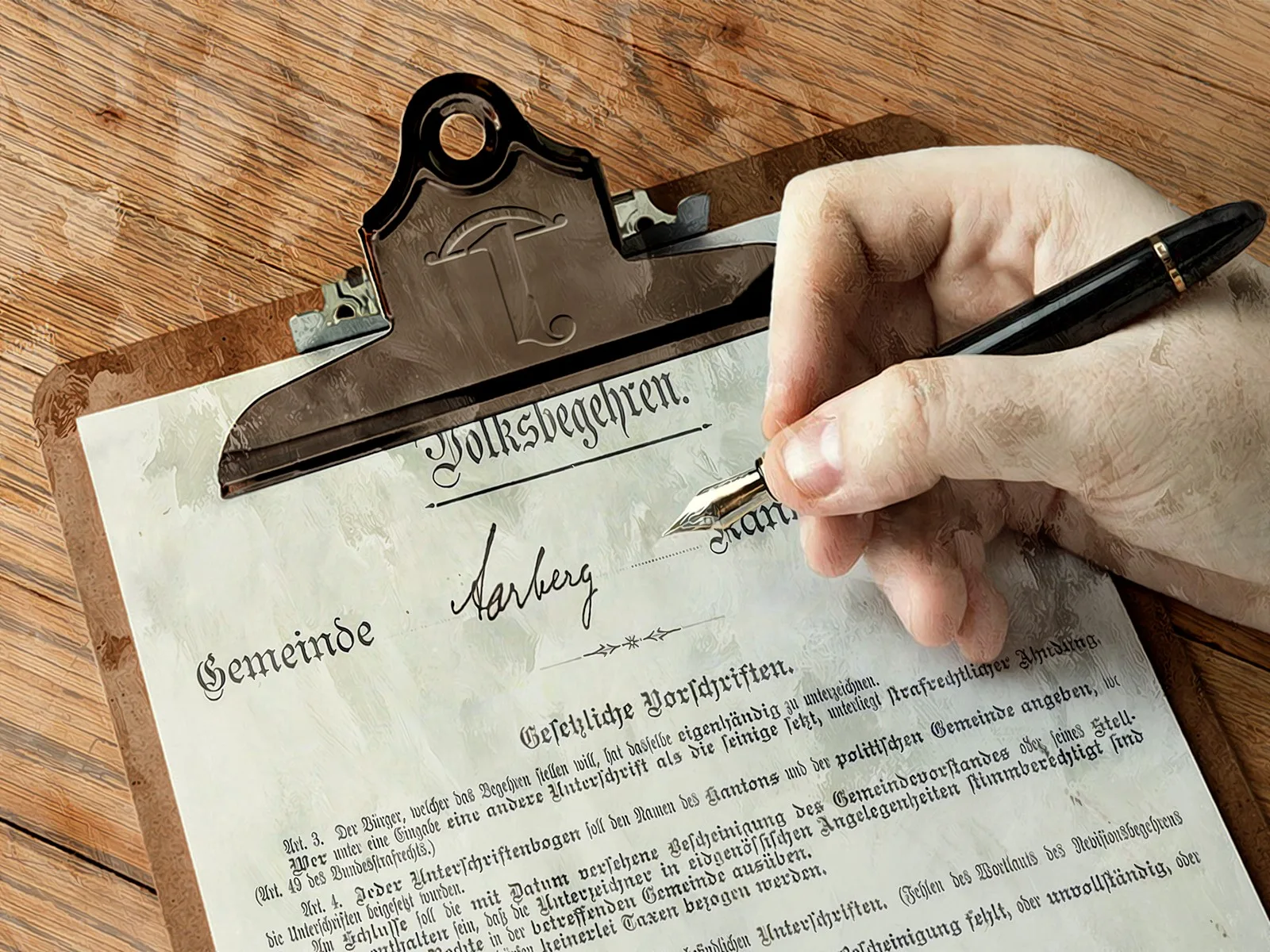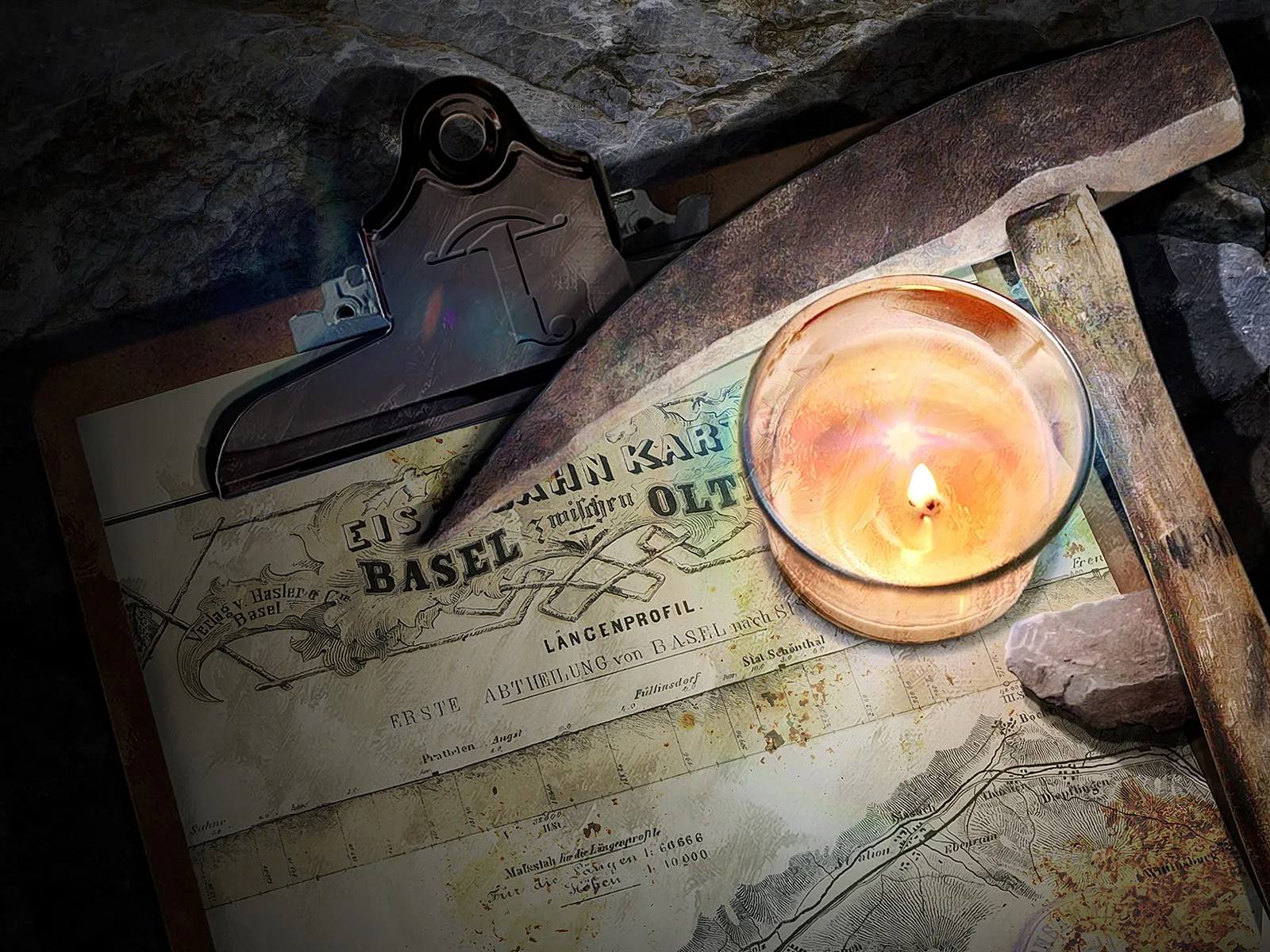
Through the Jura
In 1853 efforts got under way to ‘break the stone’ that stood between the cantons of Basel-Landschaft and Solothurn. Five years later the Hauenstein, Switzerland’s first real railway tunnel, was opened.
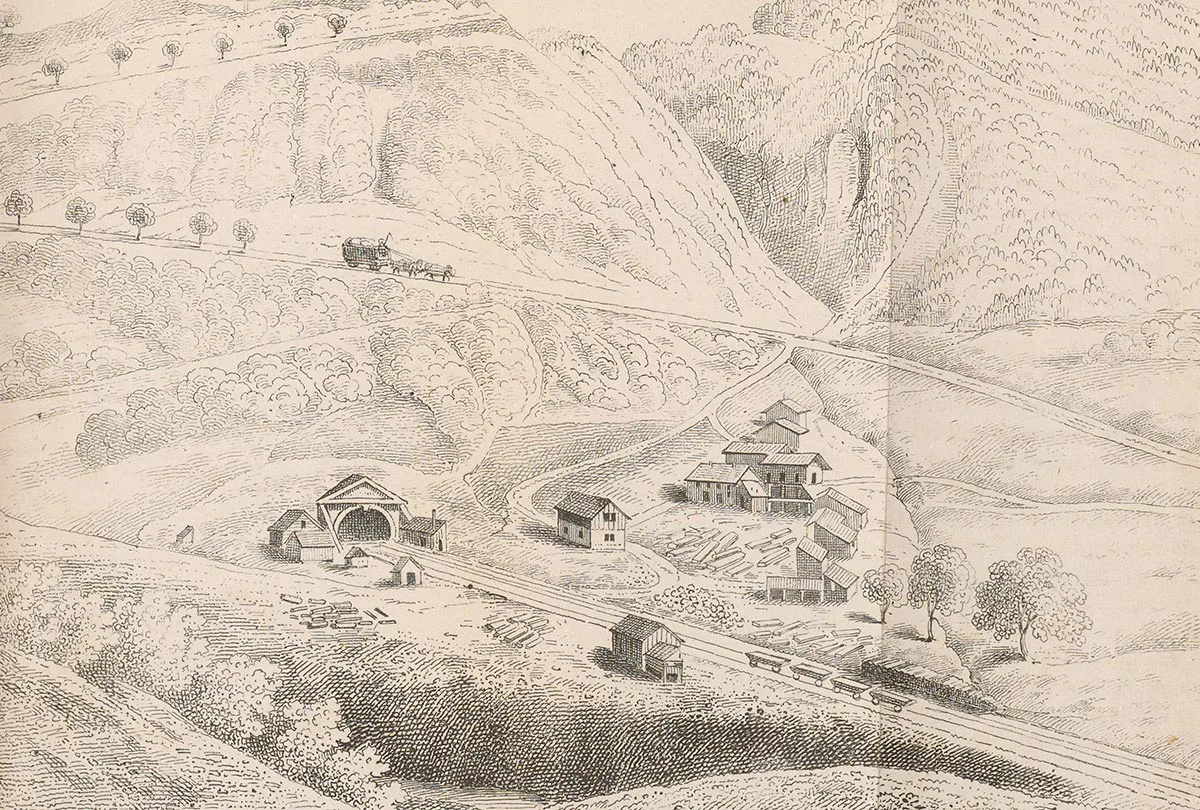
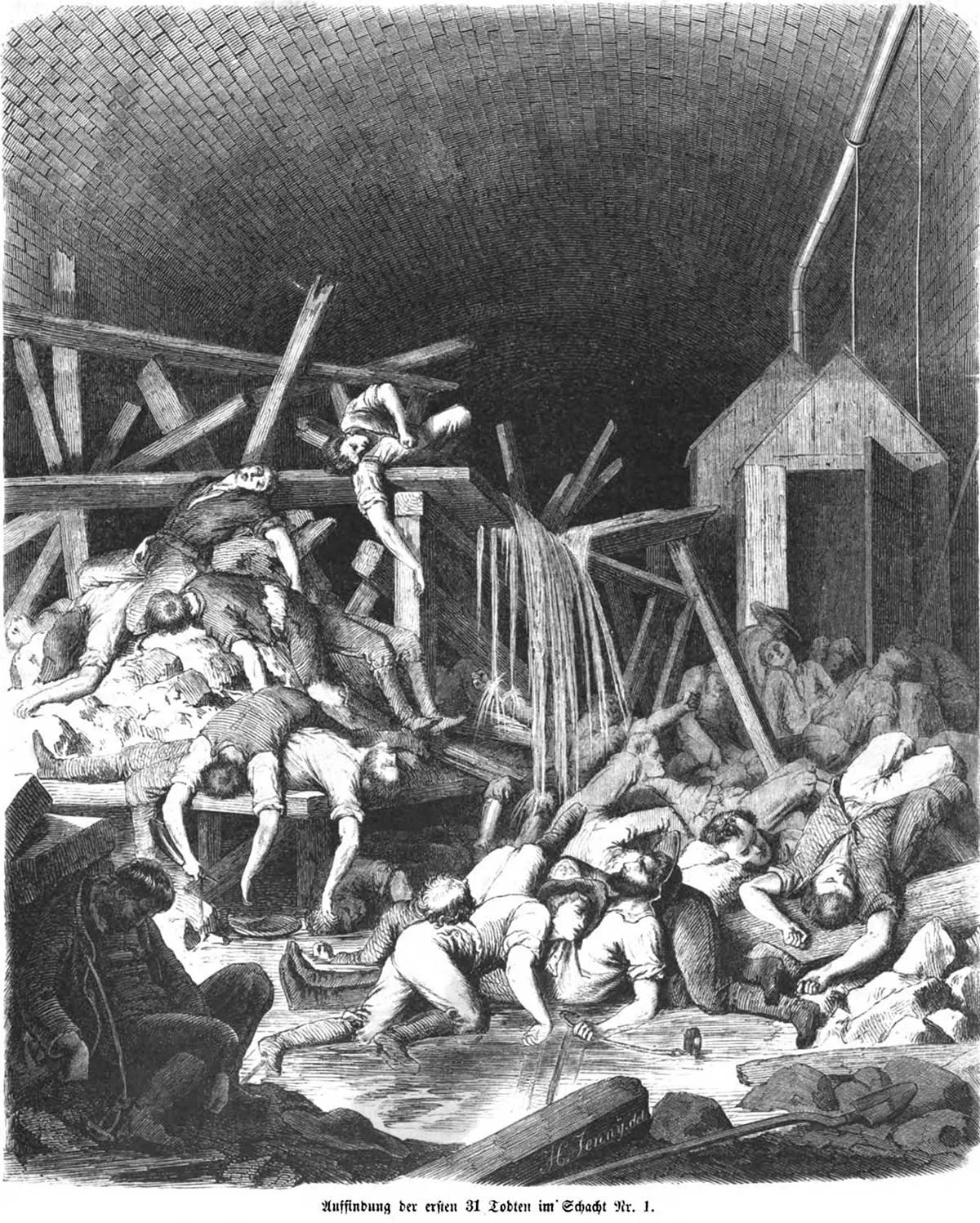
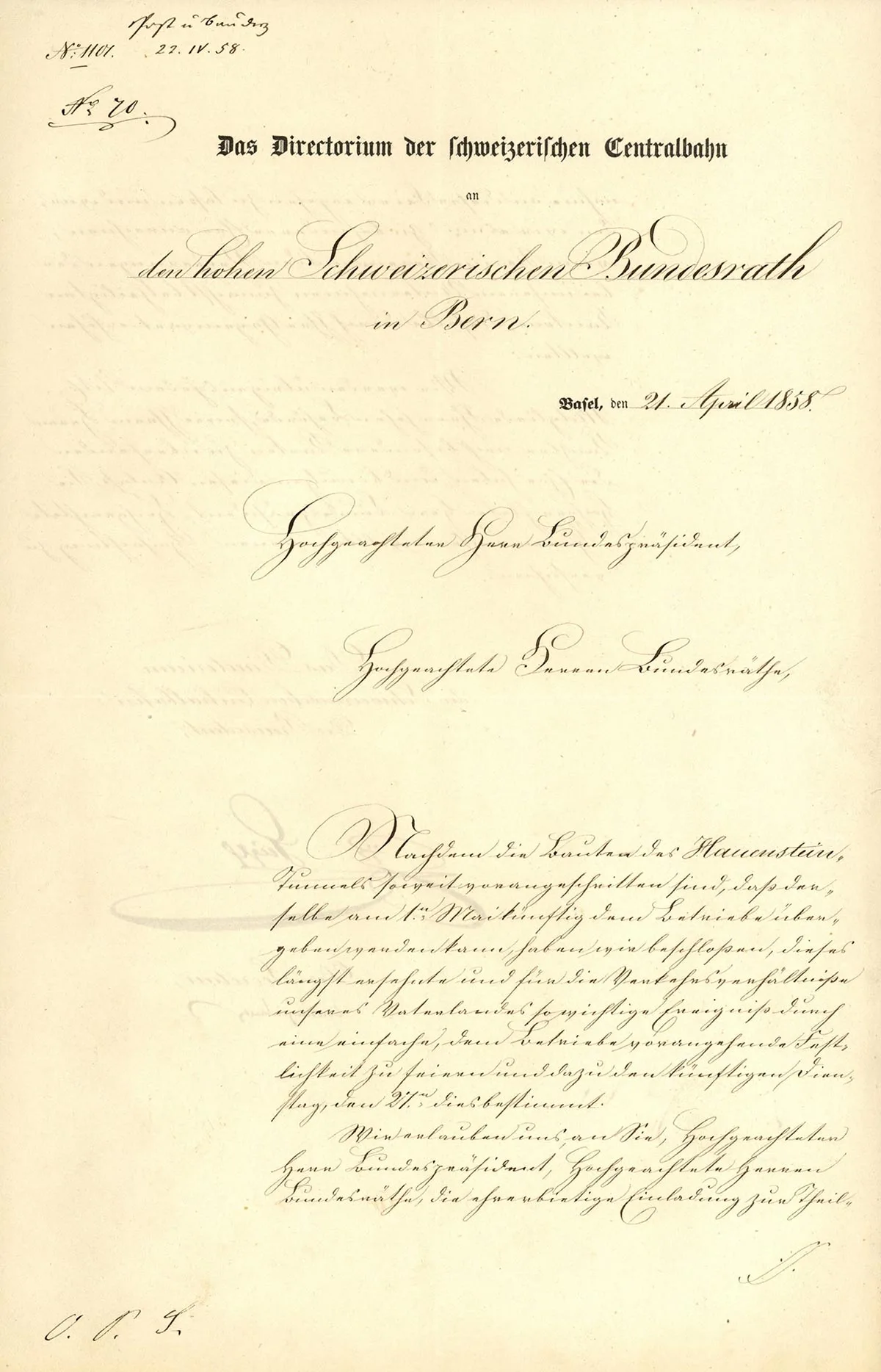
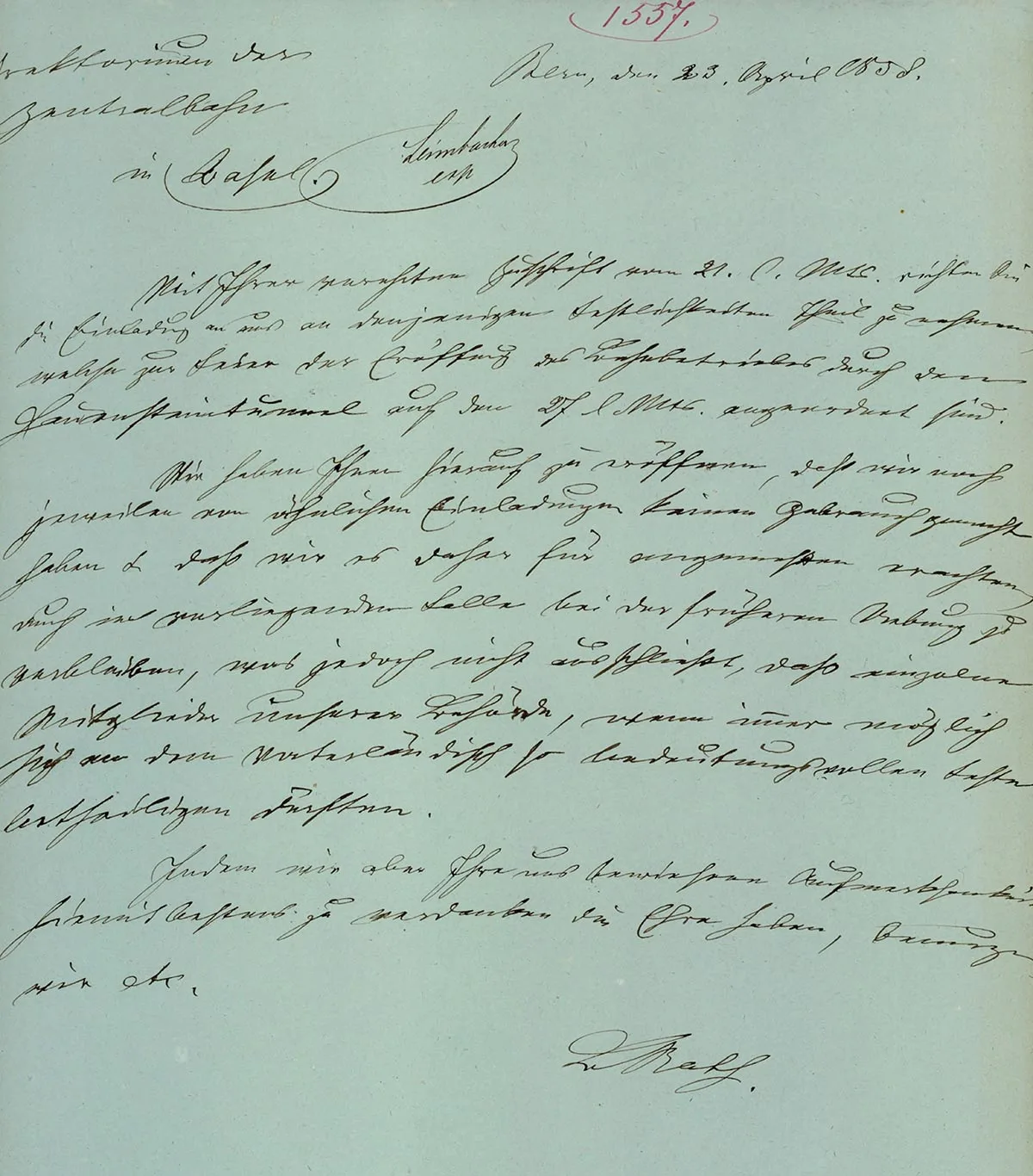
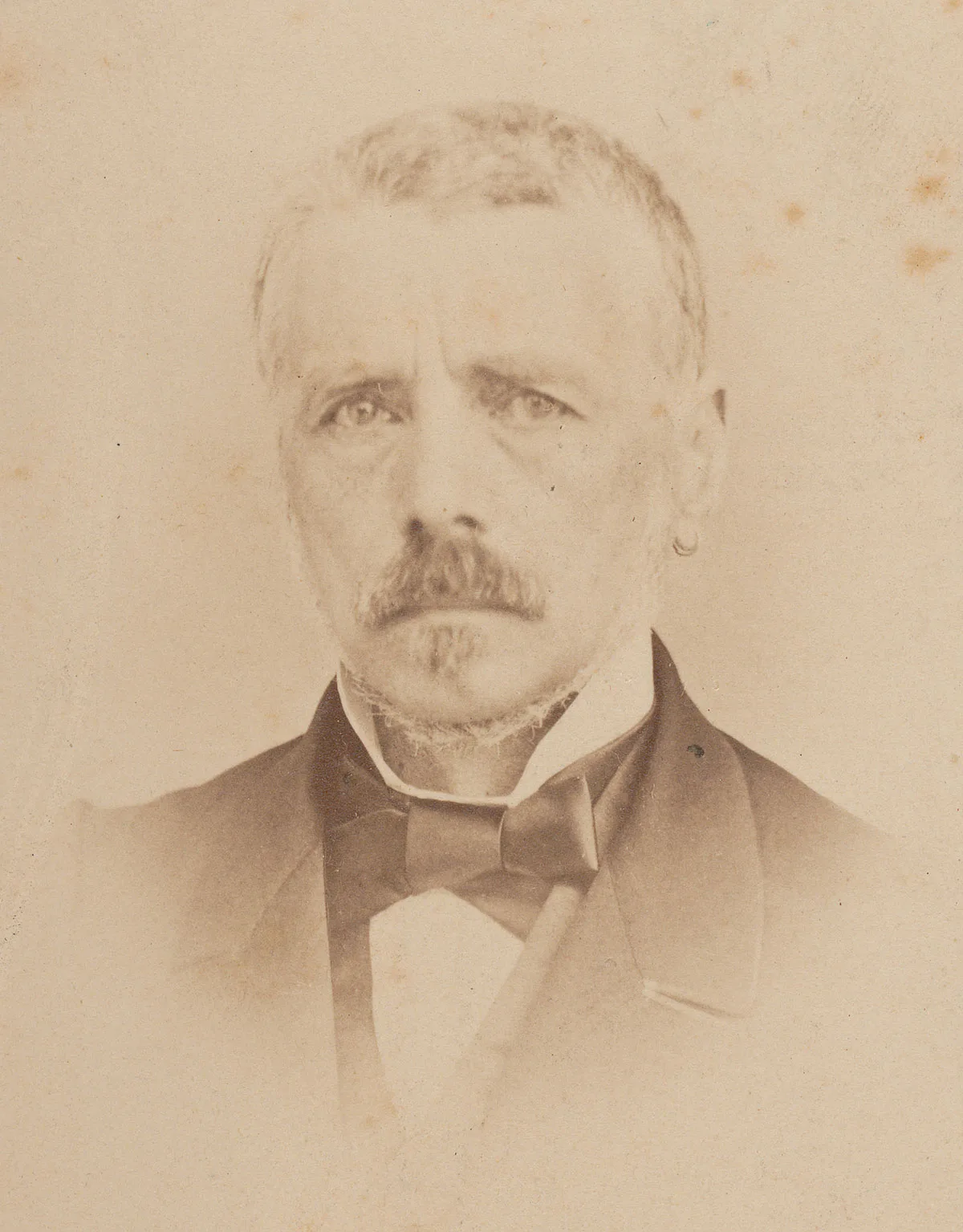
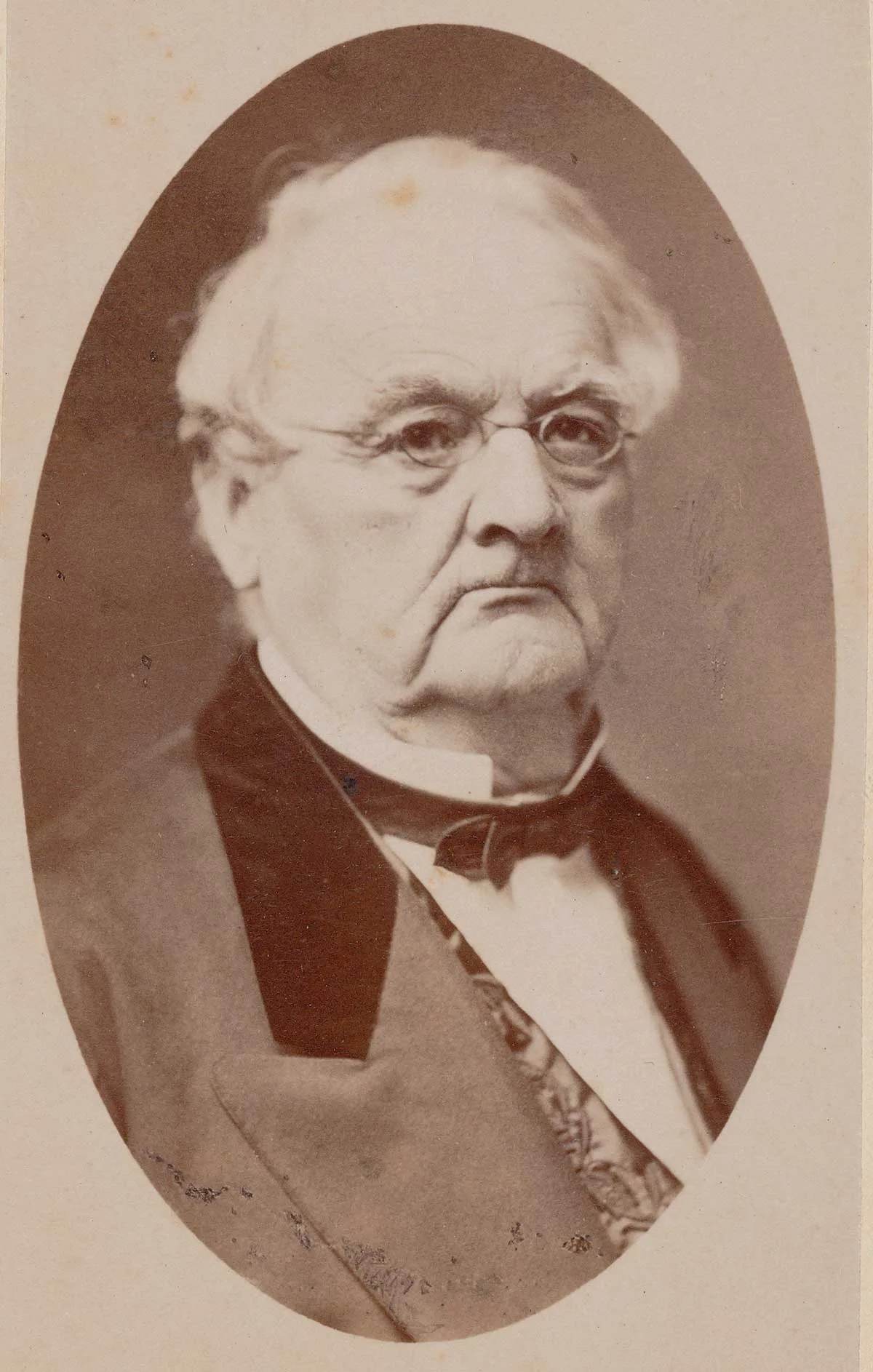
Unofficial guests of honour: Federal Councillors Giovanni Battista Pioda (left) and Wilhelm Matthias Naeff. Swiss National Museum
The first time…
There’s always a first time. In this series, we will be looking at historic Swiss firsts. The topics covered are very diverse: from the first zebra crossing to the first ever popular initiative. The articles have been produced in cooperation with the Schweizerisches Bundesarchiv (Swiss Federal Archives).

